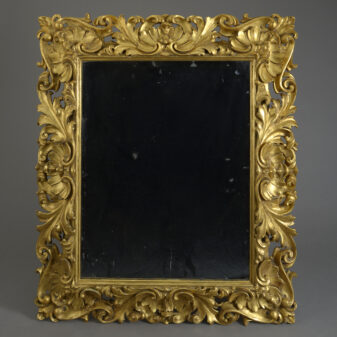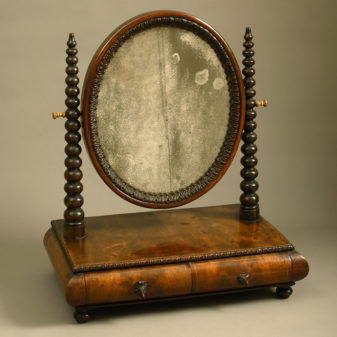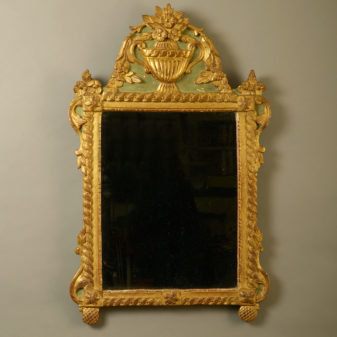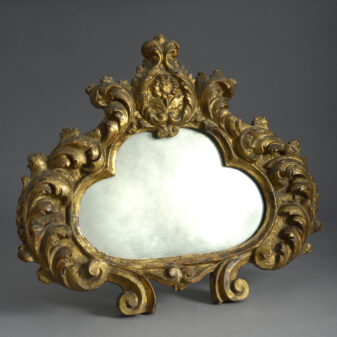A Regency Giltwood Convex Mirror
£2,950
SOLD
A Regency giltwood convex mirror, the circular frame with beaded decoration and acanthus motifs having an inner circle of ebonised balls
In the Regency Period, these mirrors were the focal point of an interior and were placed above a chimney piece, their convex plates creating a wide-angled reflection of the rooms in which they hung.
This convex mirror was inspired by Classical architecture and has become iconic in Regency furniture design. Its circular form is taken from the Roman oculus (a circular window), one of the finest examples being that in the dome of the Pantheon in Rome. An oculus, plural oculi, from Latin oculus: eye, denotes a circular opening in the centre of a dome or in a wall. It is also known as an ‘œil de boeuf’ from the French meaning bull’s-eye and convex mirrors such as this have also become referred to as ‘bull’s-eye mirrors’.
The earliest known image of a convex mirror can be found in a painting by the Early Netherlandish artist Jan van Eyck – The Arnolfini Marriage – which dates to 1434 and now resides at The National Gallery, London.









